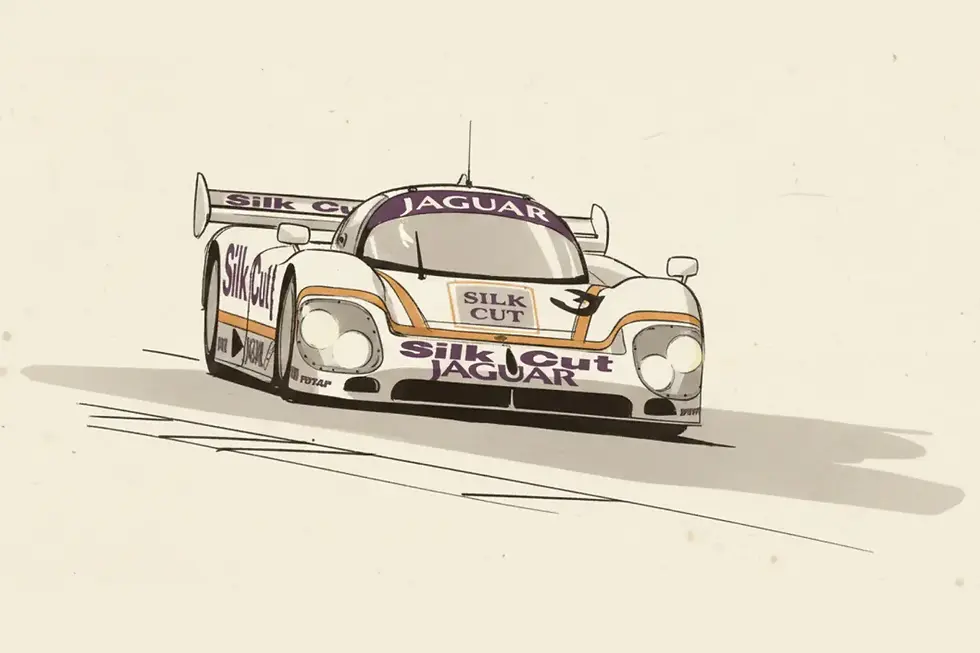Endurance racing

Endurance racing /en-dyoo-ruhns ray-sing/ noun (uncountable)
Endurance racing is a form of motorsport where teams of drivers compete to cover the greatest distance within a pre-defined time, typically lasting for several hours or up to a full day. This is motorsport's ultimate test of mechanical stamina and human sleep deprivation. Unlike a sprint race, an endurance event is a brutal, round-the-clock marathon that tests a car's ability to not explode and a driver's ability to not fall asleep. It is a form of motorised siege warfare where victory is often decided not by the fastest car, but by the one that spends the least amount of time being frantically repaired in the pits at three in the morning.
The Full Story of Endurance Racing
In the beginning, almost all motor racing was a contest of endurance. The great city-to-city races of the heroic age were gruelling, multi-day affairs on treacherous public roads. The formal discipline, however, was born in 1923 in a small town in rural France. The 24 Hours of Le Mans was conceived not as a pure race for speed, but as a test bed, a brutal trial to prove the reliability and robustness of the passenger motor car.
This philosophy perfectly suited the British automotive psyche. While Italian cars were often fast and fragile, the British excelled at building cars that were tough and durable. The Bentley Boys, a band of wealthy, hard-driving amateurs, dominated Le Mans in the late 1920s. Their cars were essentially hugely over-engineered road cars, fast but fantastically strong, and they were perfect for the punishment of racing for 24 hours. They established a British love affair with the race that would be rekindled in the 1950s by Jaguar.
Jaguar's C-Type and D-Type models were not just beautiful; they were revolutionary. Their greatest contribution was the successful implementation of aviation-derived disc brakes. On a long circuit with a high top speed like Le Mans, the ability to brake later and more consistently than the drum-braked competition was a colossal advantage. Jaguar’s five victories in the 1950s, including two by the plucky Scottish privateer team Ecurie Ecosse, cemented the legend.
Over the decades, the nature of the sport has transformed. The idea of nursing a fragile car to the finish line has been replaced by a flat-out, 24-hour sprint. Modern endurance prototypes are among the most technologically advanced racing cars in the world, capable of incredible speeds and surprising reliability. Teamwork is paramount. With three drivers per car, each driving in stints of several hours, the race is a complex strategic chess match played out by a huge team of engineers and mechanics.
While Le Mans remains the crown jewel, other great races like the 24 Hours of Daytona and the 12 Hours of Sebring form the Triple Crown of endurance racing. They are all a test of the same fundamental principles: a perfect balance of speed, mechanical sympathy, and the sheer, bloody-minded refusal to give up as the sun rises on a new day.
For The Record
Why does the race last 24 hours?
The 24-hour format was chosen by the founders of Le Mans to be the ultimate test of a car's reliability and a manufacturer's engineering prowess. The thinking was that if a car could survive being driven flat-out for a full day and night, it was a truly robust machine that the public could trust.
Is it just one driver for the whole race?
No, that would be both impossible and illegal. Teams consist of multiple drivers, typically three for a 24-hour race, who drive in stints of two to four hours at a time before pitting to hand over to a fresh teammate.
How do the drivers sleep?
They don't, much. They might manage to get an hour or two of rest in a cramped motorhome or a physiotherapist's chair between their driving stints, but the constant noise of the circuit and the adrenaline make proper sleep almost impossible. It is a supreme test of physical and mental exhaustion.
What were the most important British innovations in endurance racing?
Two stand out. The rugged durability of the 1920s Bentleys proved the value of over-engineering in an era of fragility. In the 1950s, Jaguar's successful implementation of disc brakes at Le Mans was a game-changer that rendered drum brakes obsolete in top-level motorsport.
Is it true the race used to start with drivers running to their cars?
Yes. The famous "Le Mans start" required drivers to line up on the opposite side of the track, and at the drop of the flag, sprint to their cars, climb in, start them, and roar off. This spectacular but highly dangerous procedure was abolished in 1970 after drivers began ignoring their safety harnesses in the rush to get away.
